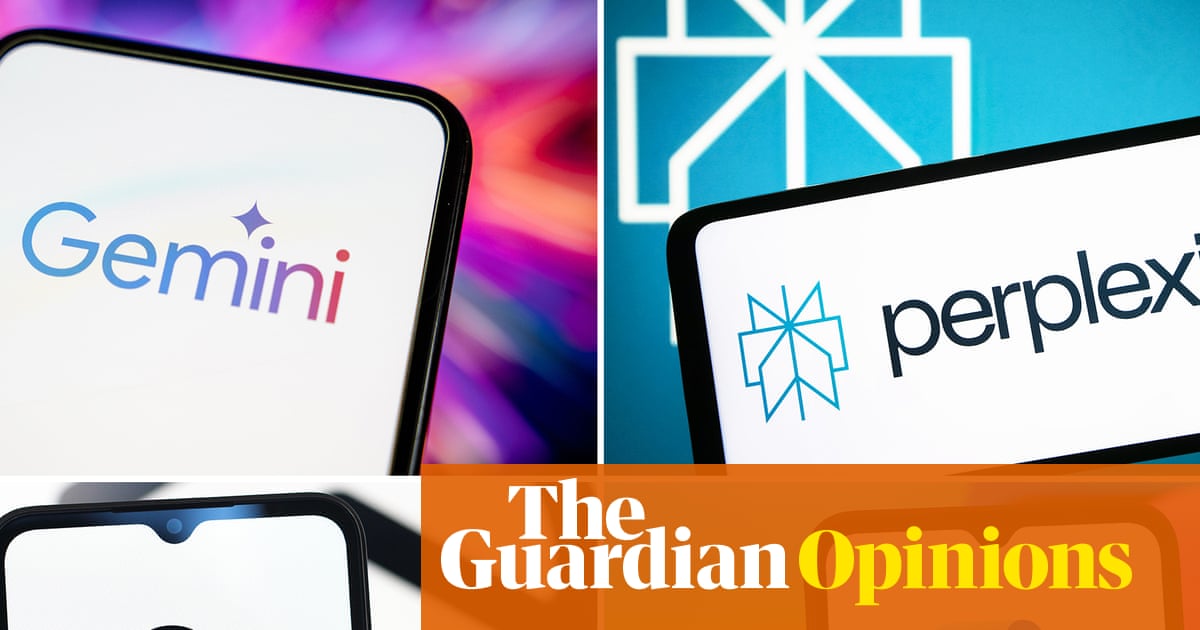By the end of this year, the tech industry will have invested about $717bon over three years into large language model (LLM) AI and the infrastructure needed to support it. While estimates for next year vary, it is possible that industry will invest a comparable amount. This suggests that the industry is receiving more capital than has been invested in the rest of the tech industry since the modern era began in 1956, the year the justice department’s consent decree with AT&T gave birth to Silicon Valley.
In a technology investing career that now spans 43 years, I have never seen a phenomenon remotely like large language model AI. Big Tech, journalists, politicians, CEOs and investors are all convinced that AI is an inevitable Next Big Thing that will change everything in our economy and society for the better.
Much has been written about LLMs, including books that challenge the promises of the industry, in at least one case suggesting LLMs are a confidence game. One issue that remains unaddressed is that even if the technology delivers on its promise, many, if not most of the current players are bound to fail. The knock-on effects of these failures may be catastrophic, especially for equity investors.
Depending on how you count, there are either five or six essentially identical LLM development programs in AI from Big Tech players in the US: Google, Amazon, Meta, xAi, and Microsoft/OpenAI, who may be either allies or competitors. This does not include Nvidia, which supplies semiconductors and software to the industry, Apple, which has a large program for internal use, Anthropic, founded by former OpenAI team members, and many others. Each one of the five or six Big Tech programs appears to be seeking a global monopoly, the cost of which will be measured in hundreds of billions of dollars.
Investment in AI in by corporate customers in 2022 was $91.9bn, which does not include investments from industry, investors and other sources. Gartner group estimates that total investment in LLMs, related infrastructure and other AI services will be $1.48tn, up nearly 50% on 2024. Even though that number includes investments that are AI-adjacent, the level of investment in AI is without precedent.
According to Epoch.ai, total sales of LLM products to the public by market leaders OpenAI, Google, and Anthropic were about $1bn in 2023, growing to about $4bn in 2024. Revenue from all sources this year may be between $235bn and $244bn, but the vast majority of that will go to the infrastructure required to train and operate LLMs. Almost every forecast anticipates continued high revenue growth for many years, reaching $1tn by 2031. At least one forecaster is predicting global revenues in excess of $3tn by 2033. But to achieve those figures, investment will have to remain gargantuan.
The huge gap between capital investment in infrastructure and end user license revenue from AI software is not sustainable. Every participant is confident that the gap will close with a huge increase in end user revenue, but they may be wrong. In the meantime, investors take comfort in the fact that one company’s investment is another company’s revenue. For example, cloud services revenue at Microsoft, Google and Amazon has exploded during the industry’s investment phase. A similar thing has happened with semiconductor sales at Nvidia. Microsoft, Google, Amazon and Nvidia have made large investments in startups, providing capital that then comes back to them as revenue.
All of this investment has not yielded equivalent success for customers. Media has reported failures with AI in the law, education, wellness, software development and other categories that range between disappointing and catastrophic. The industry promises that it will fix the problems with AI, and perhaps it will. But that is a big bet, and not the only one investors and customers are making today.
Investors have assumed that every major US player in LLMs will be a winner. This assumption is essential, as the monopolies that power Big Tech – such as Microsoft’s Office suite, Google Search, Gmail, and Docs, and Meta’s Facebook – are, without exception, approaching the end of their useful lives. The vast majority of customers believe that these products have gotten worse – and made users less productive – over the past decade or more. Each Big Tech company needs a global monopoly in AI to sustain their success and market value. They are not all going to get one.
The former General Electric CEO Jack Welch made famous the notion that only two players can be profitable in a competitive industry. Below the top two, it is a struggle to survive. That means that at least three, and perhaps more, of the current players will be forced to write off their investments in LLMs. Each of the Big Tech companies has invested in the range of $100bn through this year, and by next year that number could easily double. If LLM technology does not improve rapidly, their corporate customers will also face write-offs.
Who is best positioned to succeed? The team of Microsoft and OpenAI have the best marketing, but their internal squabbles may pull them apart. xAi built an early lead with the US government, which may be jeopardized by Elon Musk’s falling out with President Trump. Google, Amazon and Microsoft all believe their cloud services will protect them, but have forgotten that capacity built for six or more major players in AI may be more than the winners will need for at least the next few years.
The day may come sooner than many expect when shareholders, directors and executives will demand evidence that the massive investment in LLM technology will generate an adequate return for them. The answer will be “no” for many, if not most, players, and the reckoning will ugly for everyone.
-
Roger McNamee is managing director at Elevation Partners and an early stage investor in Google and Facebook
